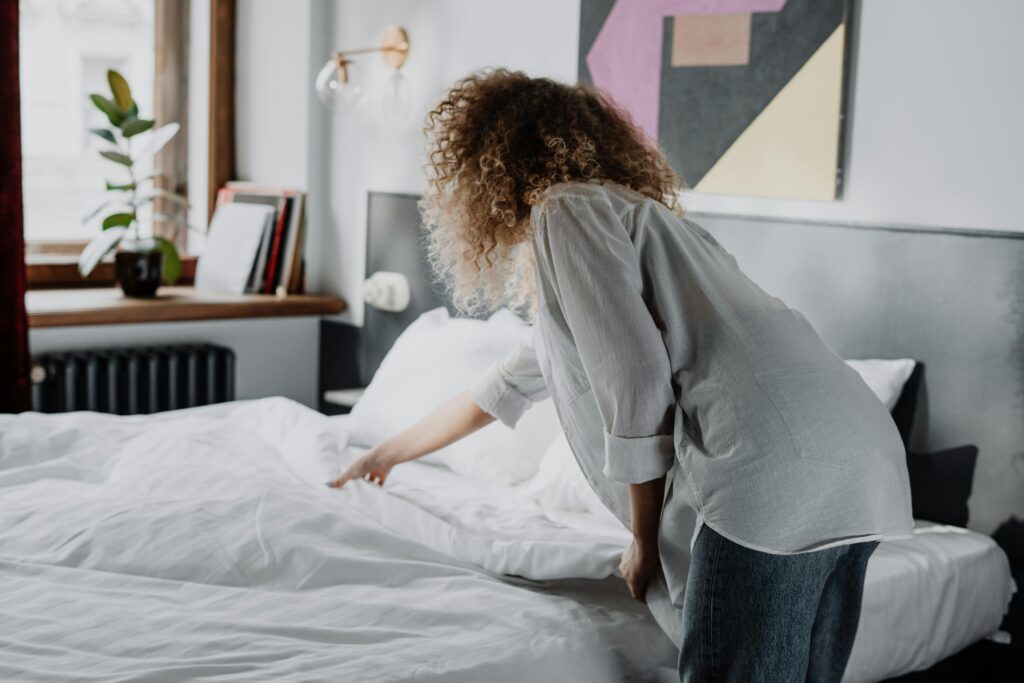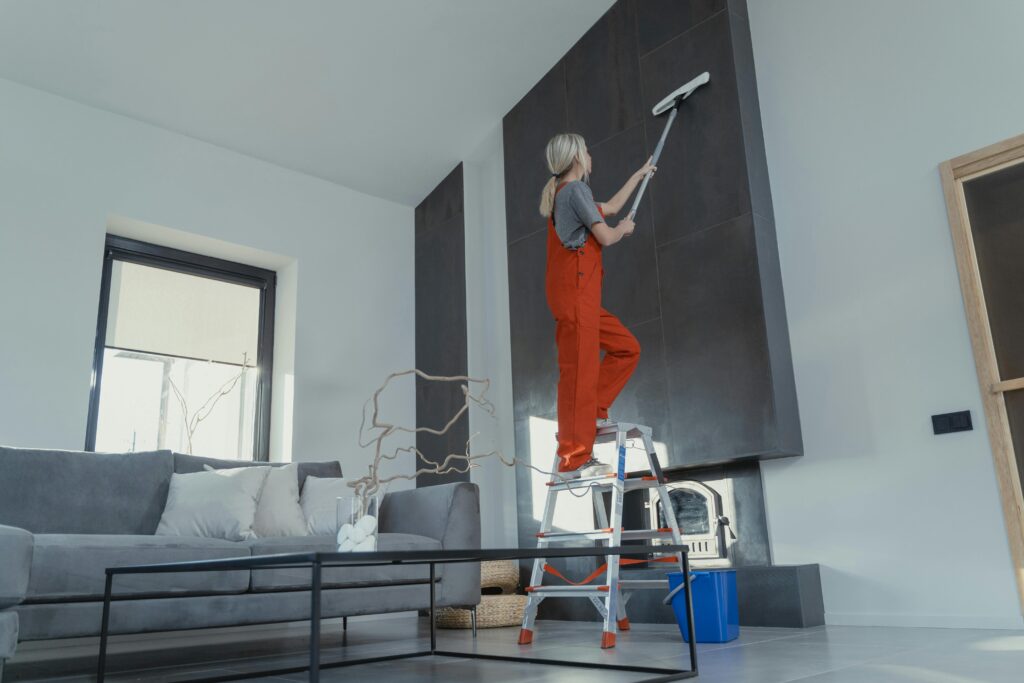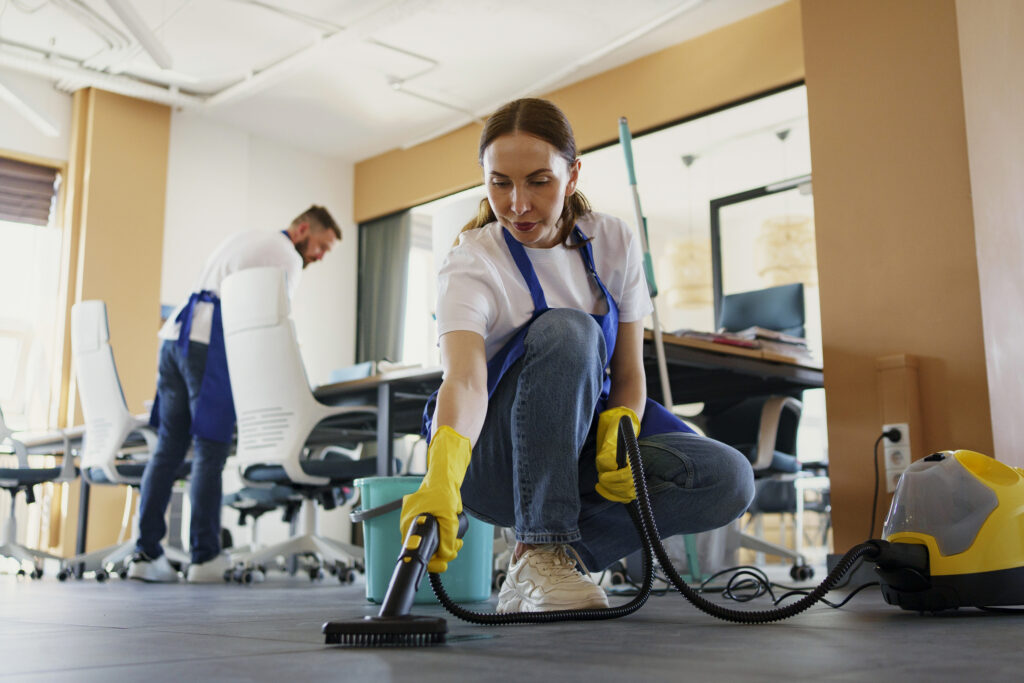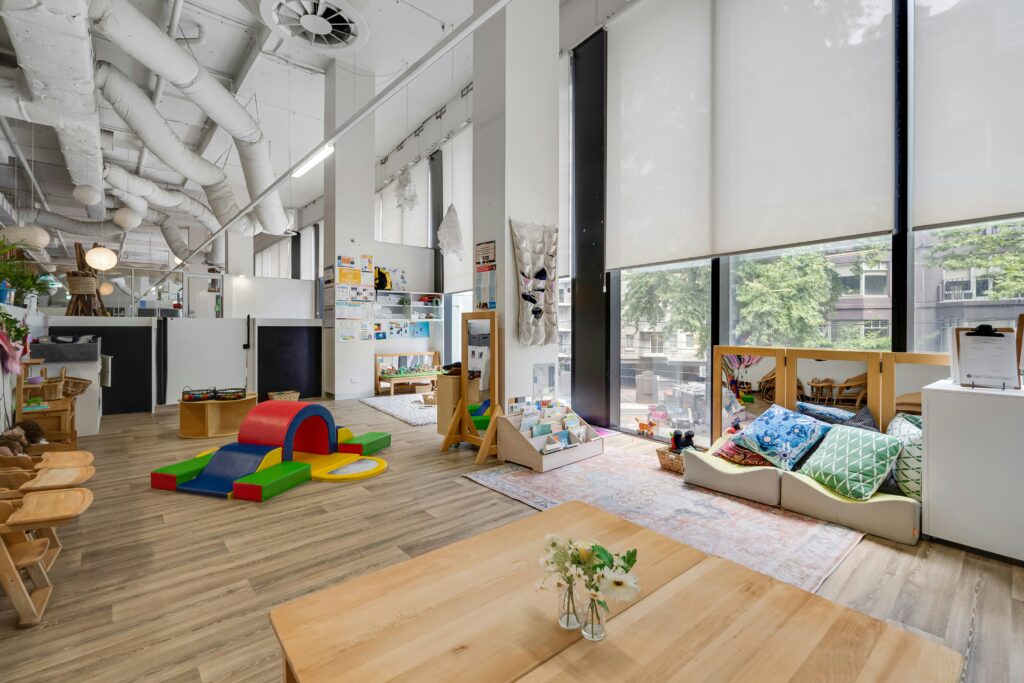
Keeping your home clean and organized doesn’t have to be overwhelming. With the right plan, you can maintain a spotless space without spending every weekend scrubbing.
Whether you’re tackling a deep clean or maintaining a regular routine, this room-by-room guide will help you stay on top of every detail. (And if you’re short on time or energy, a professional cleaning service can make life even easier!)
Kitchen: The Heart of the Home
The kitchen is one of the most frequently used rooms in any home, making it a priority on your cleaning checklist.
Here’s what to focus on:
- Daily: Wipe down countertops, clean up spills, wash dishes, and sanitize the sink.
- Weekly: Mop the floor, clean appliance surfaces (including the microwave, fridge, stove, etc.), and take out the trash.
- Monthly: Deep clean the fridge, sanitize garbage bins, degrease range hoods, and wipe down the inside and outside of your cabinets.
For best results, use a disinfecting cleaner and microfiber cloths to effectively cut through grease and germs.
Bathroom: Sanitize for Health
Bathrooms require consistent attention to maintain hygiene and reduce the presence of germs and bacteria.
Whether you’re doing a quick tidy-up or a deeper clean, be sure to cover these essentials:
- Daily: Wipe down countertops, sinks, and faucet handles.
- Weekly: Scrub the toilet (inside and out), clean mirrors, mop the floor, and disinfect high-touch surfaces.
- Monthly: Wash shower curtains or liners, deep clean grout, and descale faucets and showerheads.
A trusted home cleaning approach in bathrooms involves using antibacterial solutions and focusing on areas prone to mold.
Bedrooms: Clean for Comfort
Your bedroom should be a relaxing, dust-free space. Regular cleaning here promotes better sleep and air quality.
Take these steps to keep your bedrooms tidy and comfortable:
- Weekly: Change bedding, dust furniture, vacuum carpets or sweep floors, and wipe down surfaces.
- Monthly: Clean under the bed, vacuum mattress surfaces, and wash pillows.
- Seasonally: Rotate mattresses and organize wardrobes.
Pro tip: Declutter regularly and go through closets (clothing and linen) seasonally to get rid of unused items.
If you find it hard to keep up, you can always book your residential clean to maintain that restful retreat effortlessly.
Living Areas: Tidy Up Shared Spaces
From movie nights to family gatherings, your living spaces get plenty of use. Keep it inviting with regular care.
These tips will help guide you:
- Daily/Weekly: Dust shelves and electronics, vacuum floors and upholstery, and organize clutter.
- Monthly: Wash throw blankets and pillow covers, clean window sills and baseboards.
- Seasonally: Clean behind furniture, treat carpets or rugs, and wipe down light fixtures.
Make your living areas a welcoming space without the stress. Consider hiring a professional cleaning service to assist with detailed tasks, such as upholstery cleaning or hardwood floor care.
Work with A Cleaning Service for Optimal Home Cleaning Solutions
While this checklist helps you stay organized, sometimes life gets in the way. Hiring a trusted home cleaning team means your entire house is cleaned thoroughly and efficiently without lifting a finger.
Whether you need a one-time deep clean or recurring service, our professional cleaners use high-grade tools and proven techniques to get the job done right.
When you book your residential clean with our DC cleaning company, you can customize the service to suit your schedule and priorities. From pet-friendly cleaning products to eco-conscious cleaning options, our cleaning solutions are more flexible and personalized than ever.
Ready to experience a cleaner, healthier home? Partner with A Cleaning Service, you’ll not only save hours each week, but you’ll have peace of mind knowing your home is safe, clean, and comfortable.
Contact our DC professional cleaning team today. We service DC and the surrounding areas and are happy to stop by for your free cleaning quote.




